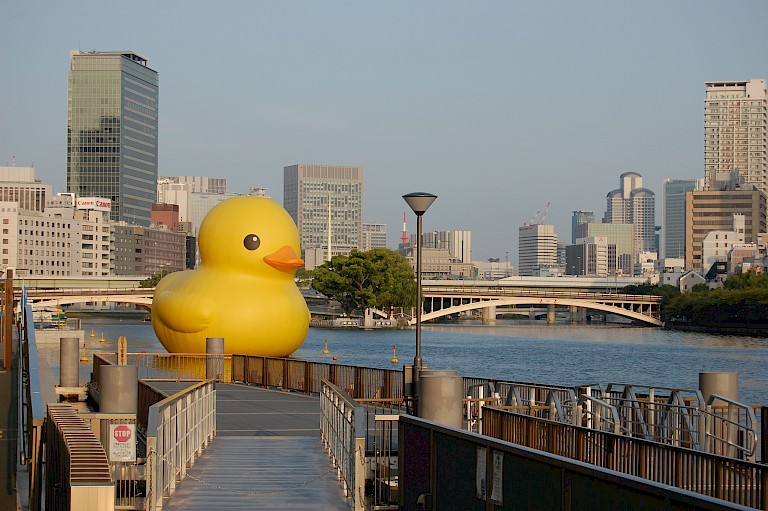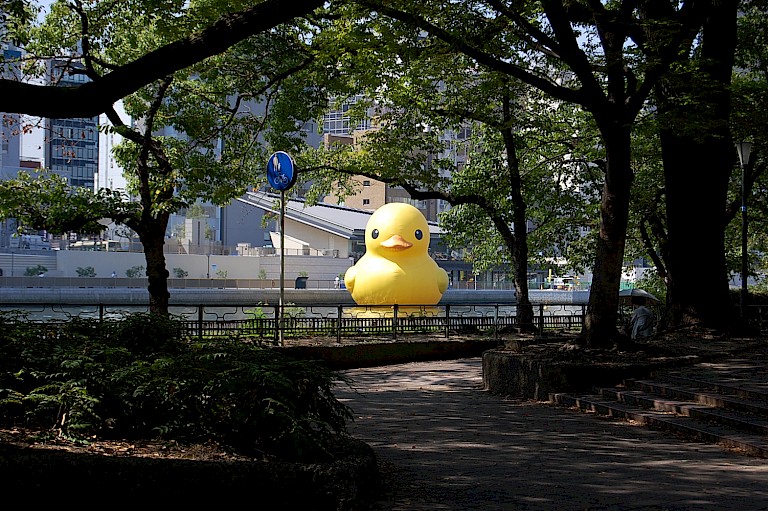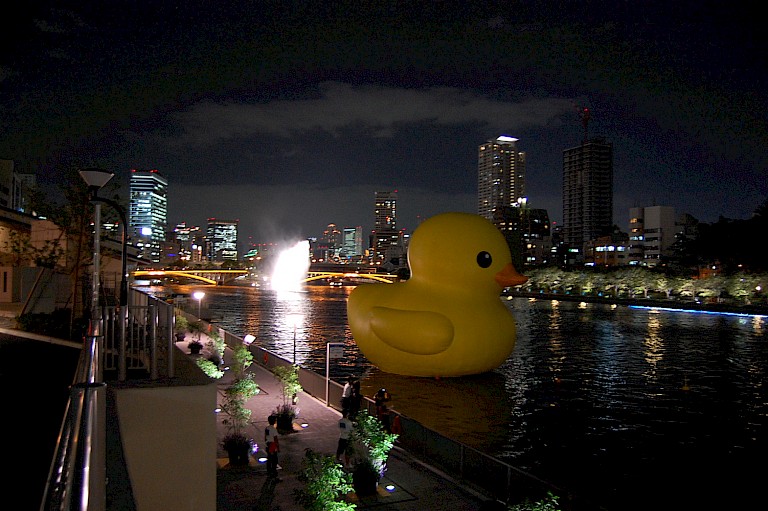



If visitor numbers are anything to go by, the Rubber Duck in Osaka was a very successful event. Documentary images show a high level of interest from a large local audience—approximately 1.9 million visitors attended over 52 days. One wonders if it is the innocuousness of the object—a fact celebrated in the artist’s statement, “the Rubber Duck knows no frontiers, it doesn't discriminate against people and doesn't have a political connotation”—that gives it such wide appeal. The familiarity of the object, its existence in all societies touched by American media and culture (think of Disney’s rubber Donald Duck or the rubber duck that Jim Henson paired with the Muppet Ernie), may also contribute to its popularity.
The rubber duck is not only innocuous, it is also playful, and evocative of childhood. In an interview, the artist likens the duck to a giant toy, and then likens himself to a giant baby throwing his toys around the world. He also says that the duck is there to surprise people and interrupt their daily routines. Like the pop artists preceding him, Hofman understands how to create a spectacle. While it is beyond debate that his duck interrupts the humdrum daily routines of urban life, the question of what it does next is never raised. Hofman reportedly “kidnaps public space” for brief periods with the Rubber Duck, but the duck, like the glut of images in which the majority of urban dwellers tend to be immersed, does not seem to offer anything beyond visual entertainment.
One is reminded of something the Situationist Guy Debord wrote. He tells us the spectacle “says nothing more than that which appears is good, and that which is good appears…the attitude which it demands in principle is passive acceptance.” Many members of the audience took photographs of themselves (“selfies”) with the duck. This does not, however, mean that they were actively creating anything. On the contrary, they were more likely contributing to the surfeit of repetitive or derivative imagery characterizing the network society.
All copyright belongs to Shanghai Academy of Fine Arts, Shanghai University.



